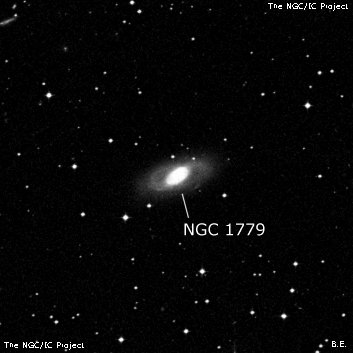
William Herschel discovered NGC 1779 = H III-500 = h345 = h2714 on 30 Jan 1786 (sweep 516) and called it "cF, S, irr F, bM.". John Herschel observed this galaxy both from Slough and in South Africa. His CGH observation reads "pB, R, gbM, it is visible in strong moonlight and is much brighter than II.522 [NGC 1636] or III.399 [NGC 4163]."
Joseph Turner made sketches on 19 Dec. 1876 and 6 Dec 1877 with the Great Melbourne Telescope (plate III, figure 25) at www.docdb.net/history/texts/1885osngmt________e/lithograph_m_3_25.php). In 1882 he noted, "The nebula becomes gradually brighter towards the middle, not suddenly as shown in the lithograph."
400/500mm - 17.5" (12/8/90): fairly faint, fairly small. Contains a small, well-defined, fairly bright oval core that's elongated 3:2 NW-SE, very faint oval halo.
600/800mm - 24" (12/20/17): moderately bright, slightly elongated, ~40"x30" NW-SE, sharply concentrated with a very bright core that increases right down to a stellar nucleus. A very low surface brightness halo increasing the diameter to ~1.25' was difficult. IC 402 lies 14' ENE.
Notes by Steve Gottlieb